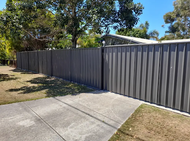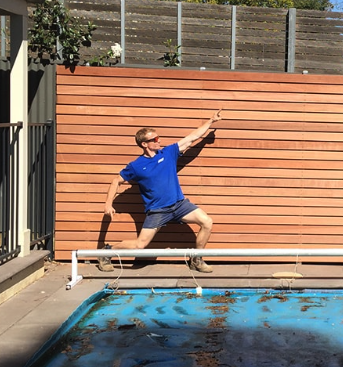The Rural Reality Check: Mitigating the Unseen Costs of your Tree Change
Posted by Lee Benson on 4th Jul 2025
Some of the less urgent but still significant headlines during the COVID-19 pandemic told the story of a growing group of Aussies migrating out of the cities and into more rural and regional parts of the country.
The mass exodus out of the cities was a response to the health stressors of the virus for some. However, for many others, it was a chance to look around and wonder if the city was still offering them everything they wanted for the price that comes with urban living. A desire for more peace and slower living during the period, a spike in remote working options and just a good chance to pursue the Aussie dream of homeownership was awaiting.
As the years since the post-pandemic normality roll on, what we’re seeing now is a reversal of the migration trend, both through on-the-ground knowledge gathered from supplying regional and urban homeowners at Outback Fencing and via the data and reports.
It’s not a lack of the promised tranquil conditions of rural living, but the climatic impacts of that exact seclusion, causing many city migrants to be unprepared for regional homeownership and the unseen costs associated. Let’s take a look at what it takes exactly to make the tree change into a long-term and sustainable move and how the hidden costs can be mitigated.
The Post-Pandemic Rural Tree Change Trends
The Centre for Population’s 2020 report states, “Melbourne had a net outflow of 17,200 residents from the city in the 12 months to September 2020. This compares to a loss of 700 residents in the year to September 2019.”
However, as the wave of urban exodus starts to recede, reality is setting in. The same centre’s 2024 Population Statement outlines the reversal of this trend: “Capital cities and regional areas are likewise projected to return to familiar patterns of population growth in the coming years, reaching their long-term population trends by 2026–27.”
This is despite predictions that the tree change was here to stay, namely because living the Australian dream of owning a home is growing further out of reach in the cities, and costing young people their mental health as well as all of their savings. So, with growing numbers of people dreaming of living in the country, why is the reverse trend setting in?
A Rural Reality Check
In many cases, it’s not down to a lack of planning on the mover’s part, but rather a lack of understanding of the reality of living in these more exposed, rural areas of the country. Contrary to the romanticised version of country life, rural living comes with its own set of complications. Many new country dwellers are confronting costs and challenges they didn’t anticipate – some of them hidden in plain sight, others more subtle, like the gradual impact of climate conditions on property construction materials.
The Unseen Costs
Property Maintenance and Building Wear
Homes located in the countryside are far more exposed to the elements than their urban counterparts. Open landscapes leave rural homes vulnerable to higher wind speeds, prolonged UV exposure and more intense seasonal fluctuations. Urban homes typically benefit from the protective effect of surrounding buildings, shielding them from direct wind and sun. The denser environment also moderates temperature extremes, helping to preserve materials over time.
For rural properties, this increased exposure often results in more frequent roof and feature repairs due to wind-lifted shingles or UV damage. Gutters can clog quickly with debris from surrounding trees, especially during storms or seasonal leaf fall, demanding regular maintenance. Fencing around open land is particularly vulnerable to wind damage and wood rot, and when fencing goes down designed to protect properties built in the bush, building issues accumulate fast.
Wind Resistance – A Hidden Factor
Wind speeds and presence vary in all parts of the country and are influenced by geographical and climatic factors. Urban environments benefit from proximity to buildings and experience lower average wind speeds due to the frictional effect of buildings and structures interrupting wind flow, known as the drag effect.
In many regional areas, homes are built on open blocks or elevated land, making them highly vulnerable to wind-related wear and tear. Rural areas typically stand alone, which is usually an alluring trait for urban folk and boosts the value of rural properties. Even when they’re built in towns, the frictional effect doesn’t compare to the building mass of cities and they experience more consistent and higher average wind speeds.
City dwellers can afford to only consider wind resistance in building materials as an afterthought, but for rural properties, it is a necessity to prioritise. When fences aren’t reinforced for high wind speeds, they can fail and degrade fast. They have a monumental job in keeping properties safe from storm and wind damage, and without wind protection, damage to roofing, sheds and building exteriors can happen in a matter of seconds.
How Product Manufacturers are Responding
The good news is that product manufacturers, particularly ones based in Australia, have catered to all kinds of Aussies for years, and many are continuously looking for ways to make their offerings suitable for extreme weather conditions.
One of the smartest investments for anyone relocating to the country is choosing fencing that’s been engineered for high-wind environments. Colorbond steel fencing with reinforced posts is widely recommended for rural properties due to its exceptional wind resistance, structural stability and low maintenance. Unlike timber, which can warp, rot, or collapse under pressure, steel fencing systems are built to endure.
Fencing in an urban environment prioritises privacy and aesthetics, used as a tool to coexist in close proximity to others. For aspiring country folk, it takes an adjustment in priorities in your building materials, like fencing, to achieve a home with increased self-sustainability and reduced wear and tear. Choosing, and perhaps investing more in, strategic products operates as a safeguard in the art of functional landscaping. Wind-rated fencing systems help protect your property from flying debris, structural damage, and even livestock breaches, potentially saving you thousands in repair costs and insurance premiums down the line.
A Combined Effect for Optimal Wind Protection
Colorbond fencing, when properly installed, is highly effective for wind protection due to its high-tensile steel and interlocking design makes it resistant to strong winds, including those experienced in cyclonic areas, providing excellent durability and resistance to warping or lifting in high winds.
The integrity of Colorbond fencing is made possible through the exemplary Colorbond steel – a material developed in and for Australia. They’re a fantastic fencing style for hot weather conditions because the sheets can expand and contract with temperature changes. They also won’t corrode or stain due to their powder-coated finish, so wherever you’re located, your Colorbond fence won’t warp, move or split from the posts.
Colorbond fence panels are made of three panels of steel, which act as a reinforcement and further contribute to it being one of the most durable types of fencing. In studies on the effect of windbreak structures on wind flow, “the horizontal extent of windbreak effects upwind and downwind is usually assumed to be proportional to windbreak height”. Colorbond offers fencing options above 2m tall, ensuring that when height is needed for windbreak wind protection, property owners have a first line of wind defence that will deliver high drops in wind speed.
Finally, proper installation is necessary to capitalise on Colorbond’s wind resistance – when you reach this stage, check out our resources on how to install a standard Colorbond fence panel.
All of these traits of Colorbond – heat and corrosion resistance, reinforced steel sheets for strength and durability, height and strong ground fixings – combine to produce a structure that is one of the best fencing types for windy areas. Secure and durable fencing with high wind resistance acts as a structure that shelters the property and imitates the urban frictional effect of buildings in rural landscapes.
Protective Material Measures Safeguard Your Home, Your Finances and Your Country Dream
While upgrades like Colorbond fencing may involve a higher upfront cost, they’re a long-term investment in durability, safety and financial security. For homeowners in regional areas in general, and particularly those who are new to country living or are moving to an area with extreme conditions, building maintenance often comes as a sudden surprise. The often unconsidered costs of property damage and wear and tear can be a huge stress on an already strained financial and mortgage situation, causing many people to downsize or move back to the city and give up on their rural dream.
By choosing products designed for rural conditions, country homeowners can make smarter, more strategic decisions, reducing future maintenance burdens and protecting their lifestyle for years to come.
Keeping Your Rural Aussie Dream Alive
Despite trends showing slowed population growth in regional areas, the allure of a country tree change is as strong as ever – cleaner air, more space, a deeper connection to the land, and the peace that comes with leaving the urban rush behind. For many Australians, it’s still a dream worth pursuing. But like any major life decision, successful, long-term relocation lies in preparation.
Rural living brings with it a unique set of environmental challenges, and without the right knowledge and infrastructure in place, those unseen costs can quickly outweigh the initial appeal. That’s why investing in smart, weather-resistant products – like wind-rated fencing – and understanding the true demands of the landscape is so important. Once you shift your priorities in building materials accordingly, like looking for durability and wind resistance in place of low-maintenance fencing, your tree change doesn’t have to come with nasty surprises. It can be a sustainable, long-term lifestyle shift that delivers everything you hoped for – and more. The Aussie dream of country living is still very much alive; you just need to go in with your eyes wide open.


